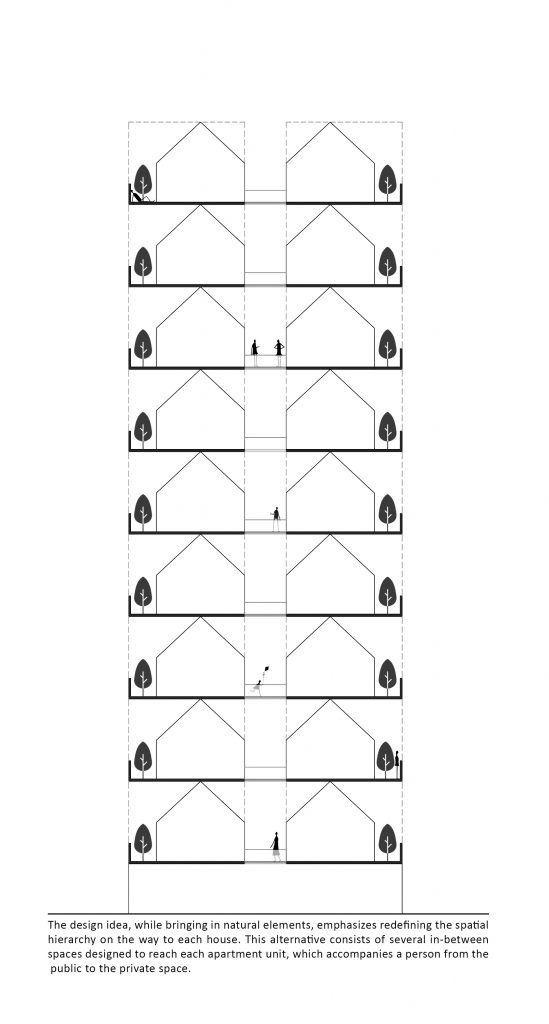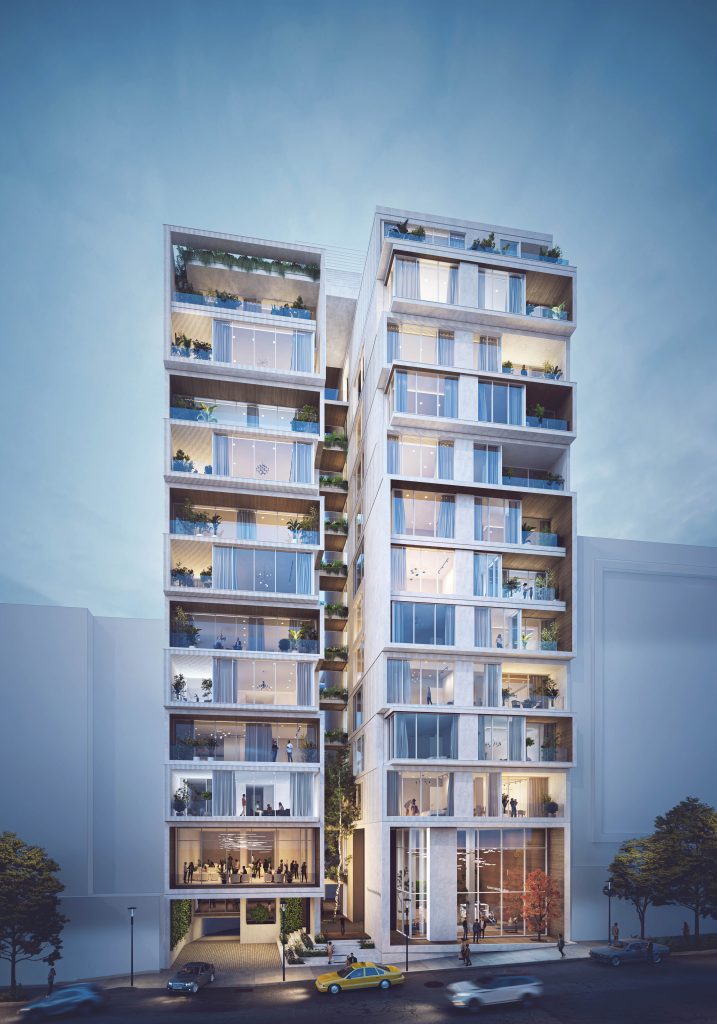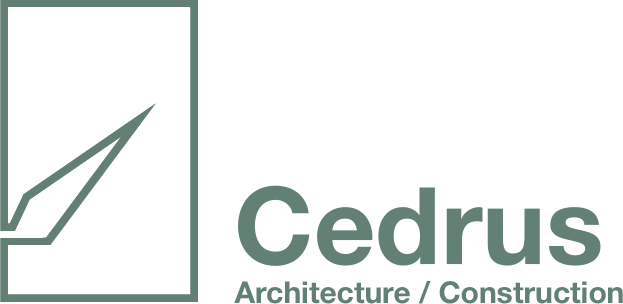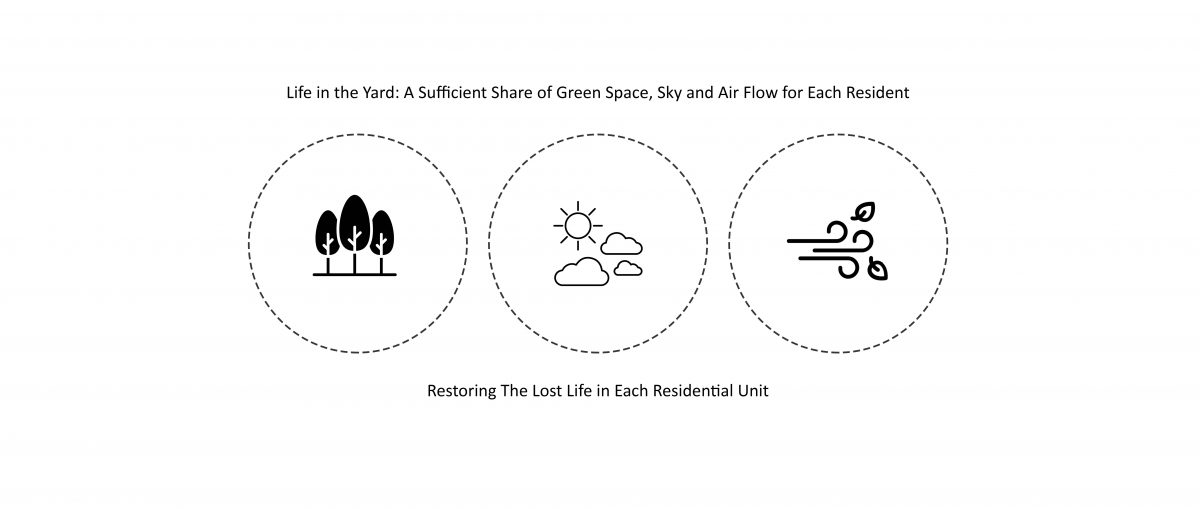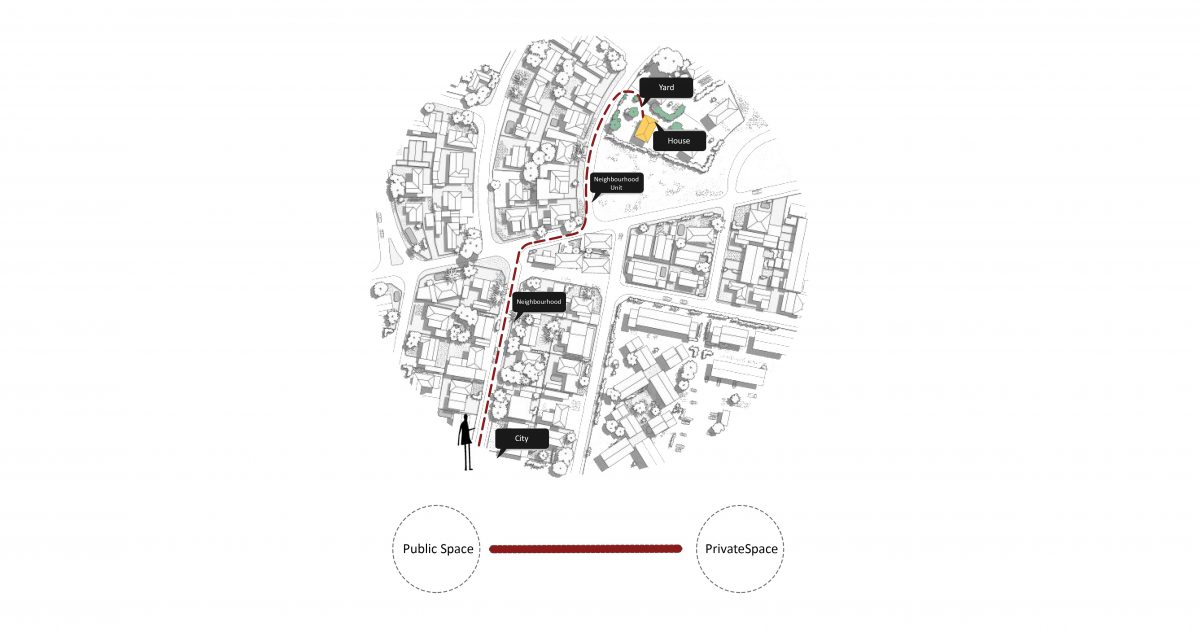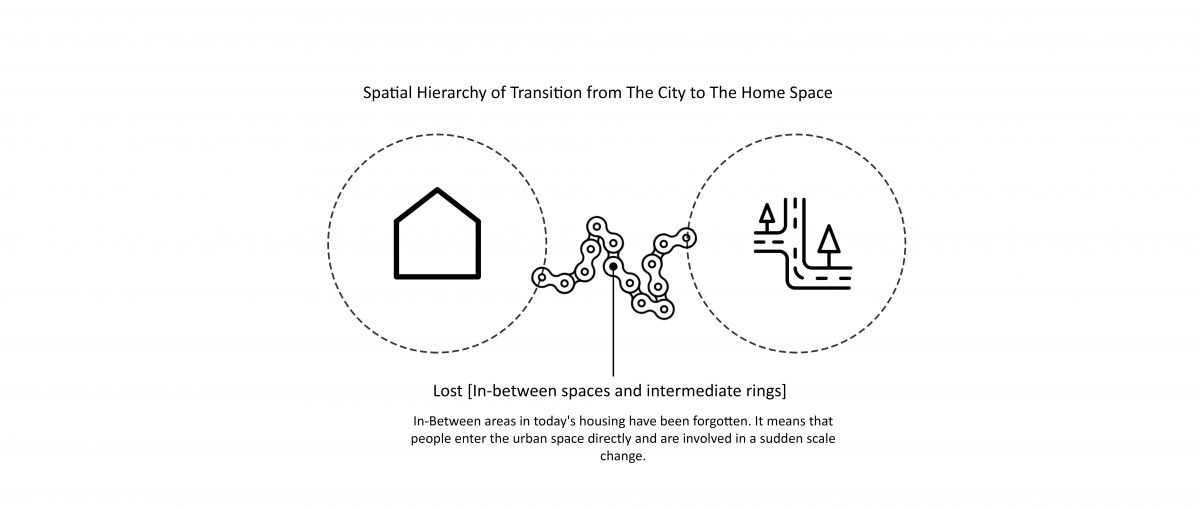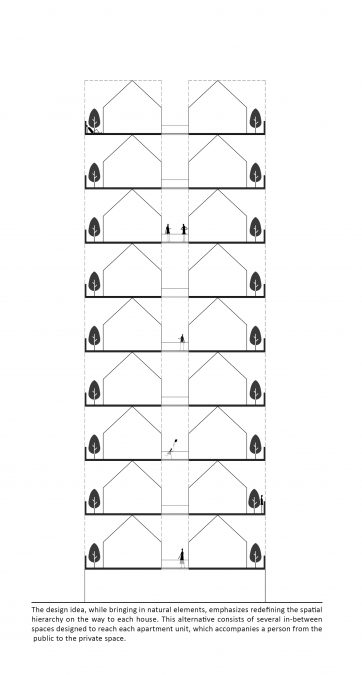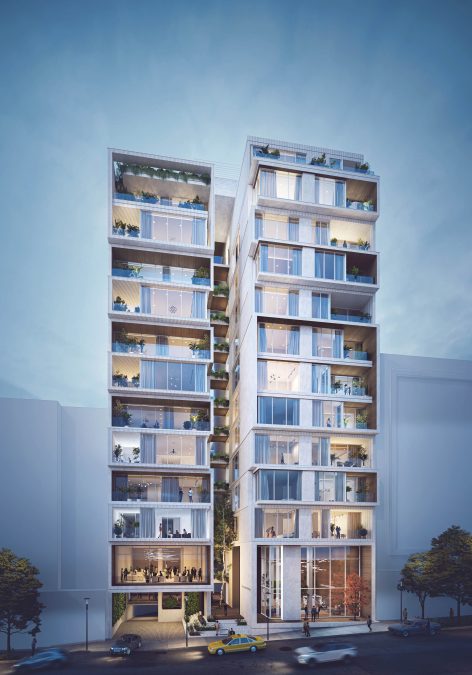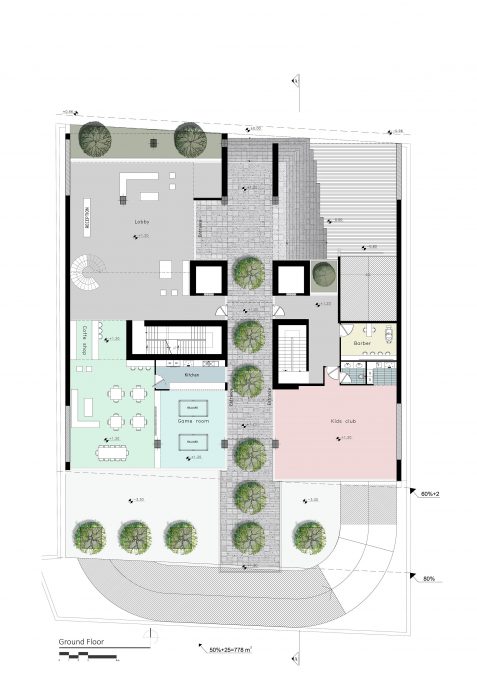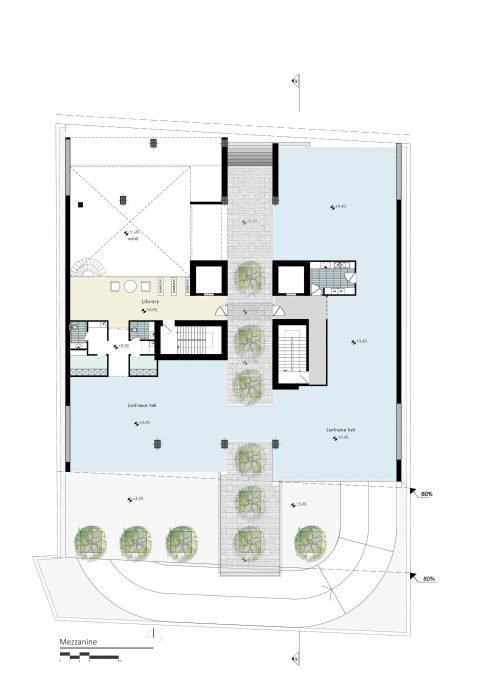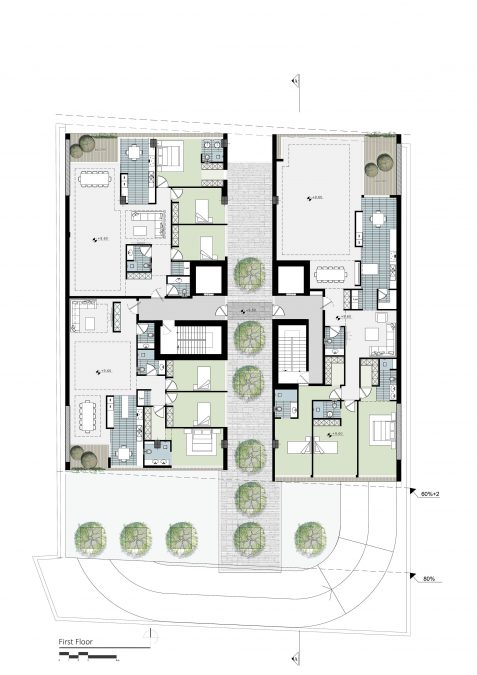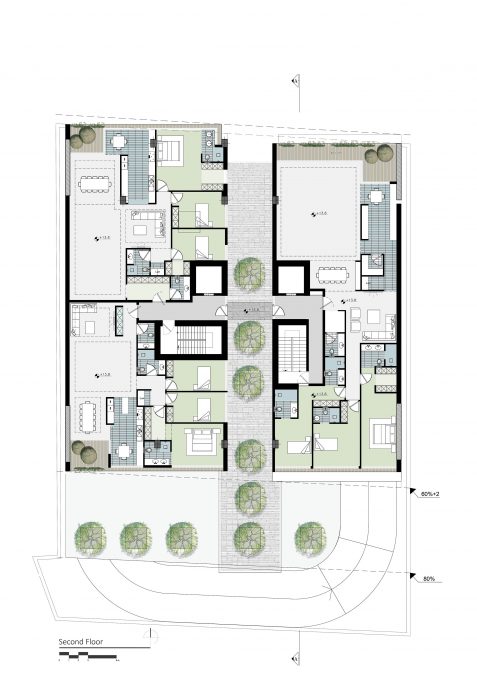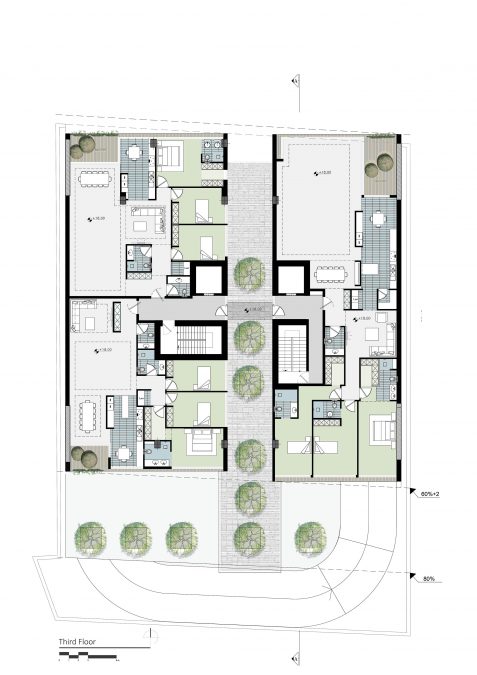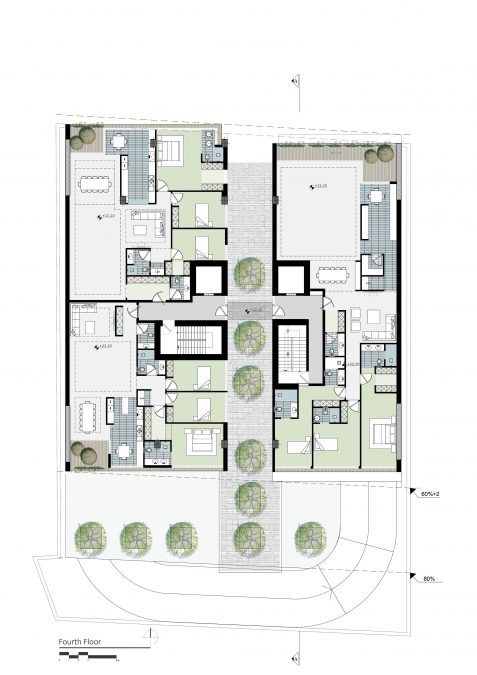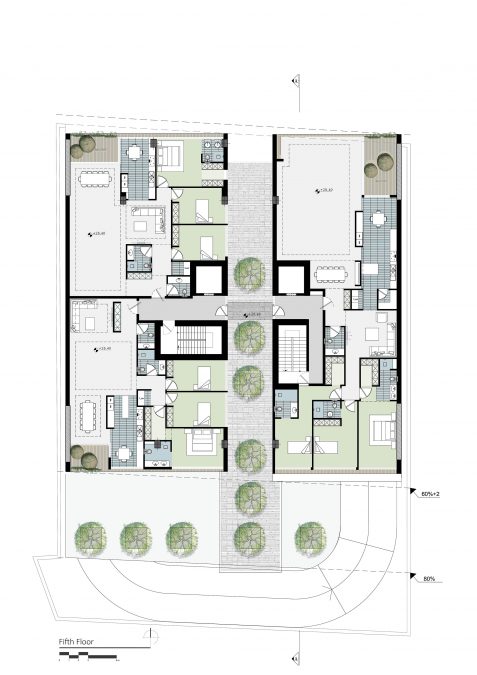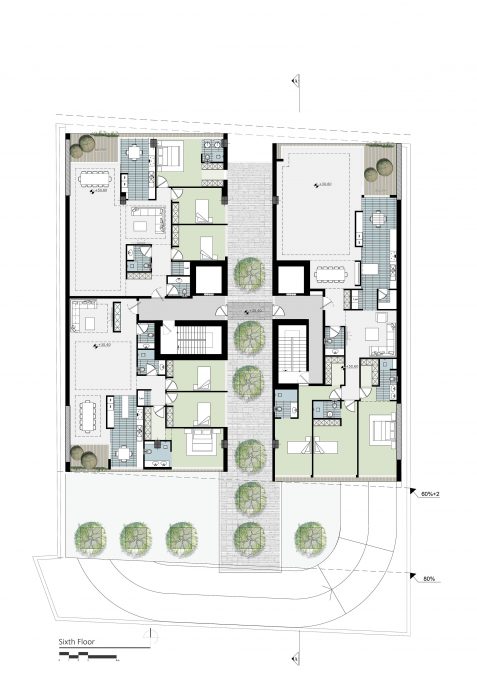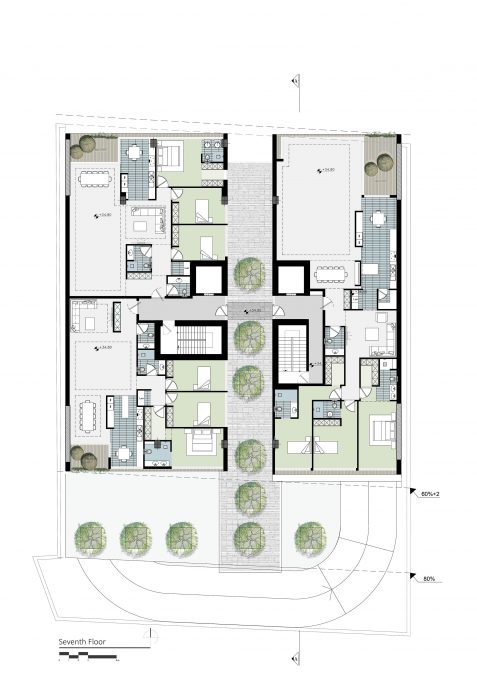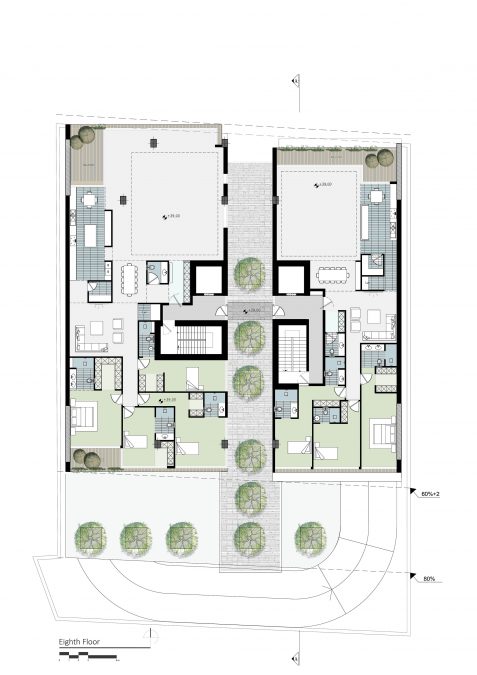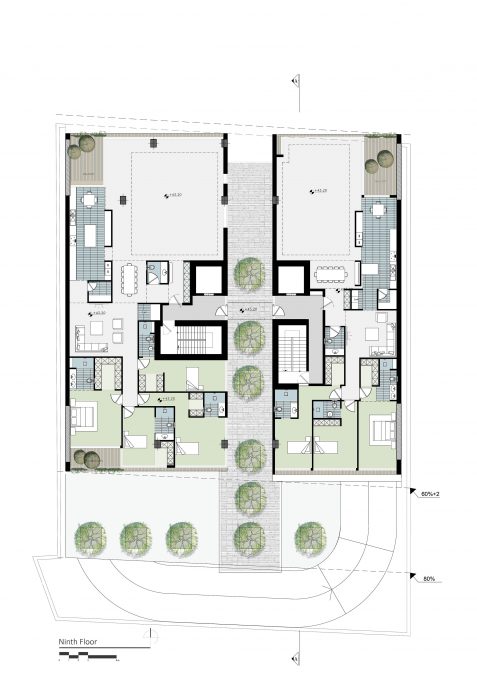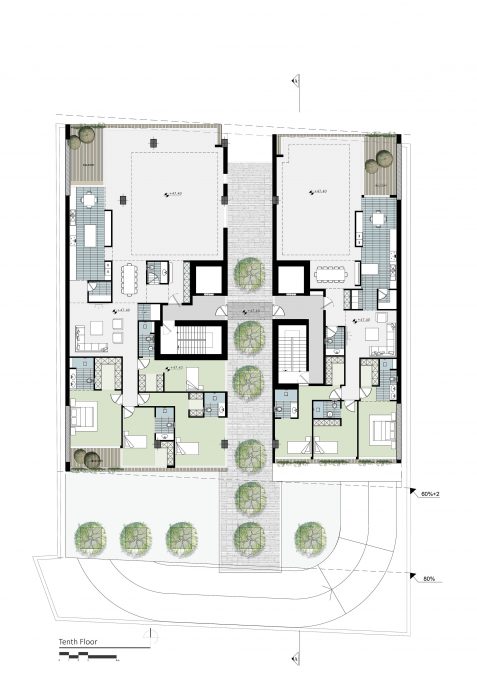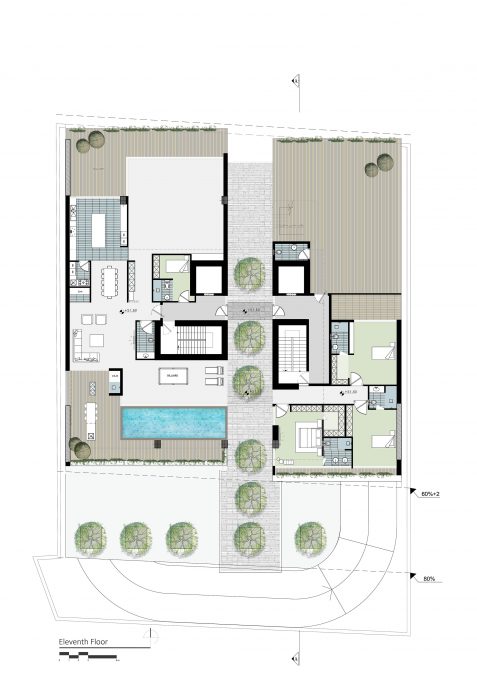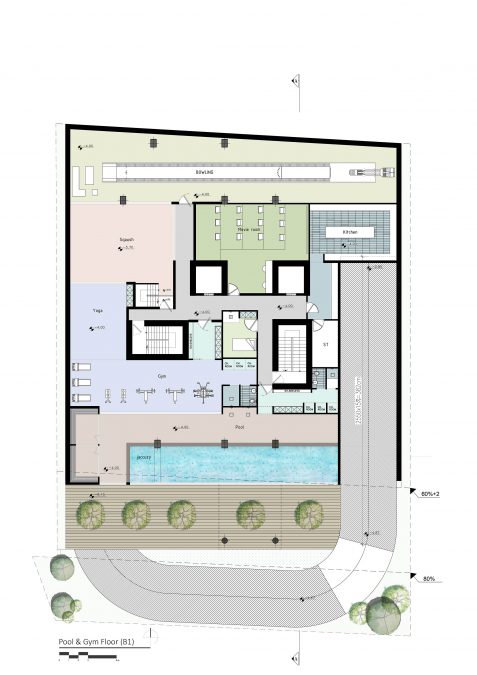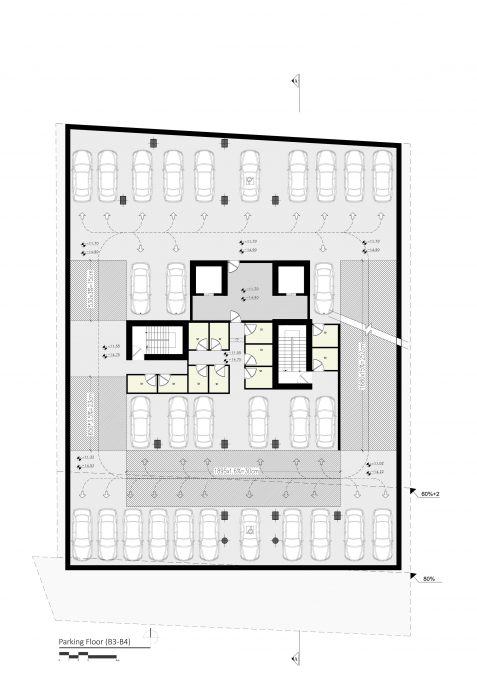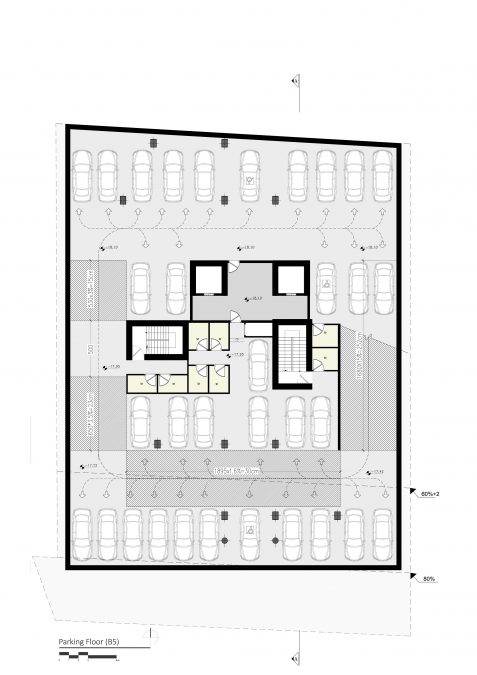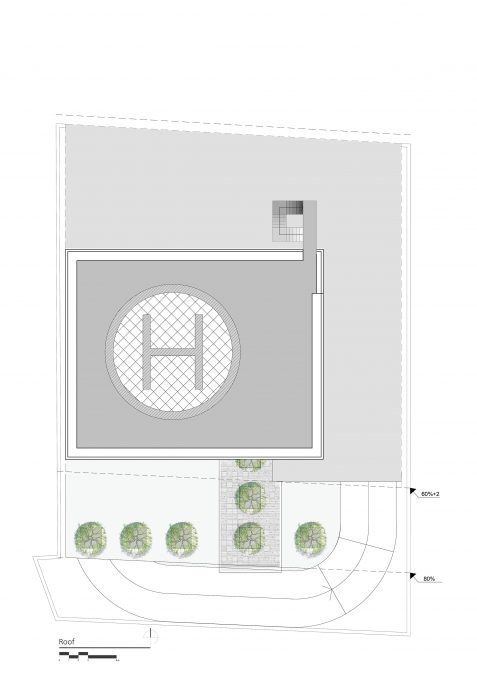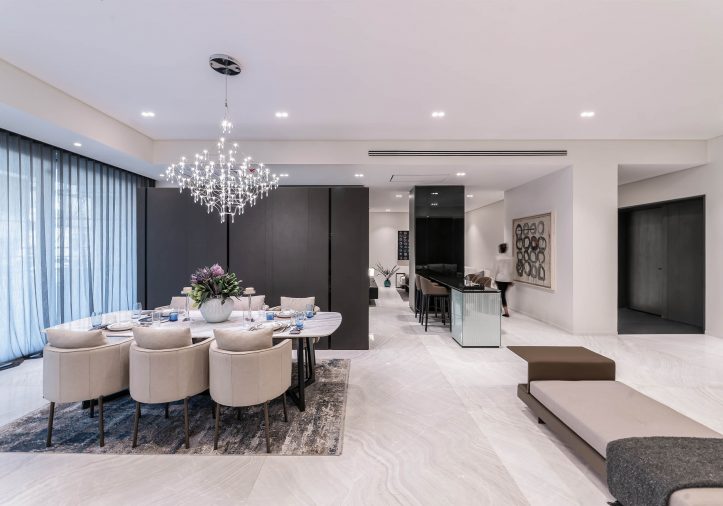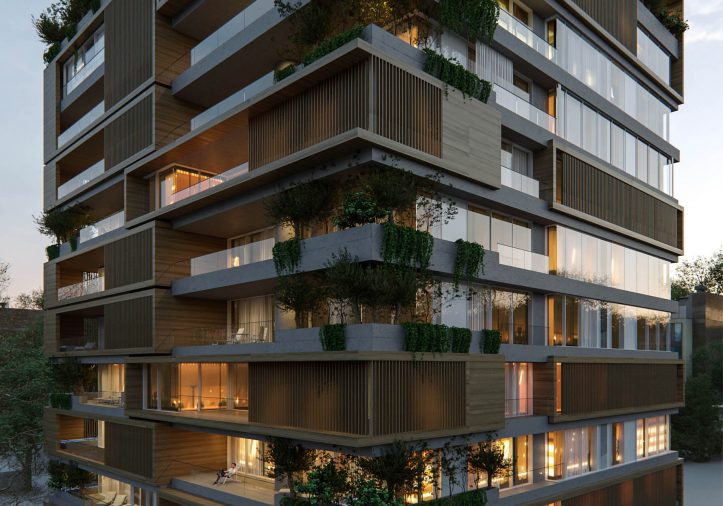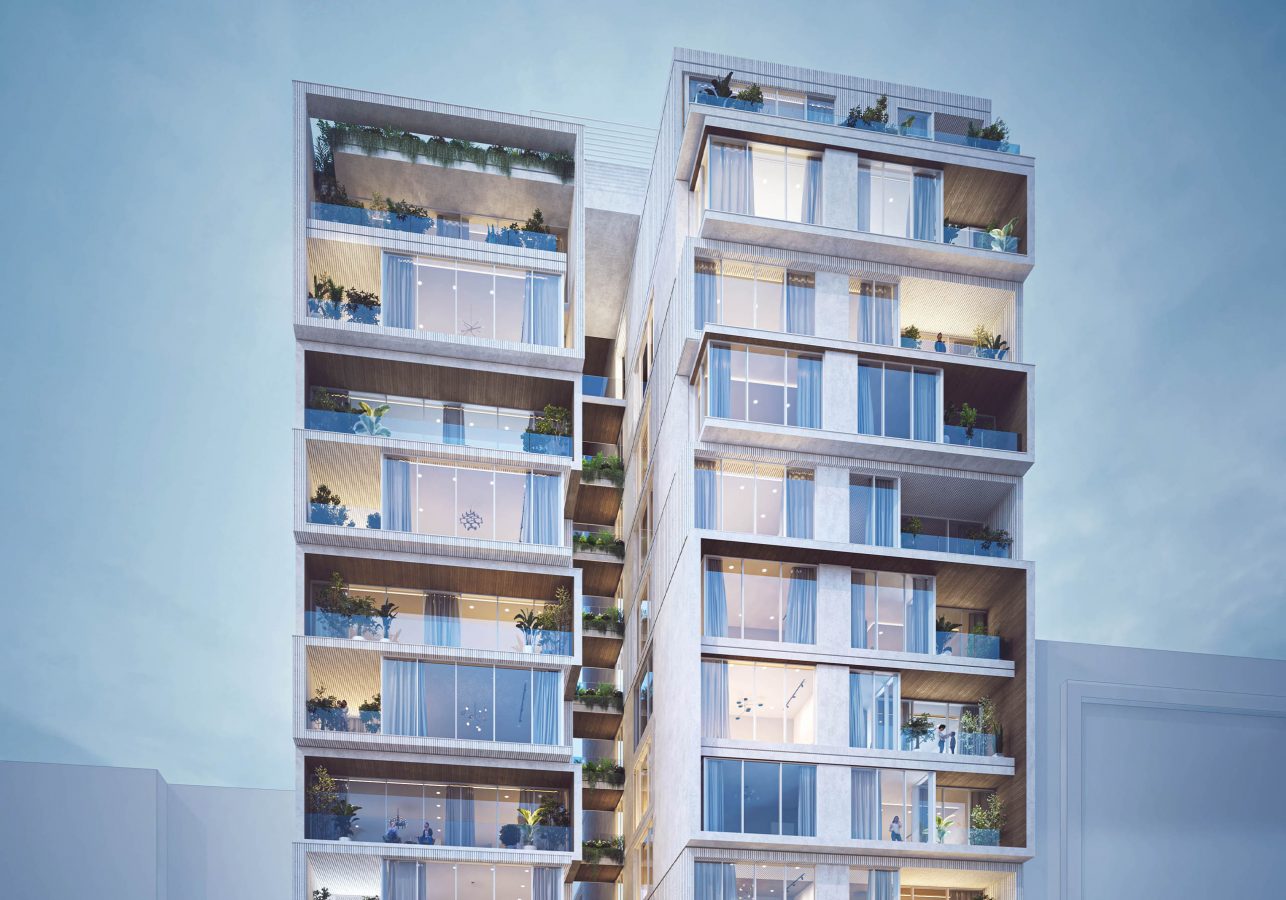
Kamran Residential Building
Client : Private Sector
Location : Elahiye, Tehran, Iran
Function : Residential
Under Construction : 2022
Roles : Design
… God how time flies! We had a garden… And an apple tree that my father planted the day I was born… My father was like that… He would plant a tree every time my mother gave him a child… When I was born, there was already an apricot tree, a plum, a cherry and a walnut tree. The apricot tree was for my elder sister Brigitte. The plum for my brother Jean and the cherry and walnut for my twin sisters, Jeanne and Claire. Funny guy my dad… Nobody understood what made him choose a particular tree for a particular child… Personally I never thought the walnut suited Claire… Anyhow, he was a stubborn man and he never gave up his idea… And after I was born, the trees kept on being planted in the garden: a pear, a fir, some exotic tree, a sort of ebony that grew really slowly… The ebony was for my sister Karine who became a dancer…
[The Story of the Panda Bears told by a Saxophonist who has a Girlfriend in Frankfurt]
By Matéi Visniec
Translated from the French by Claire Doucet and Ian Whitfield

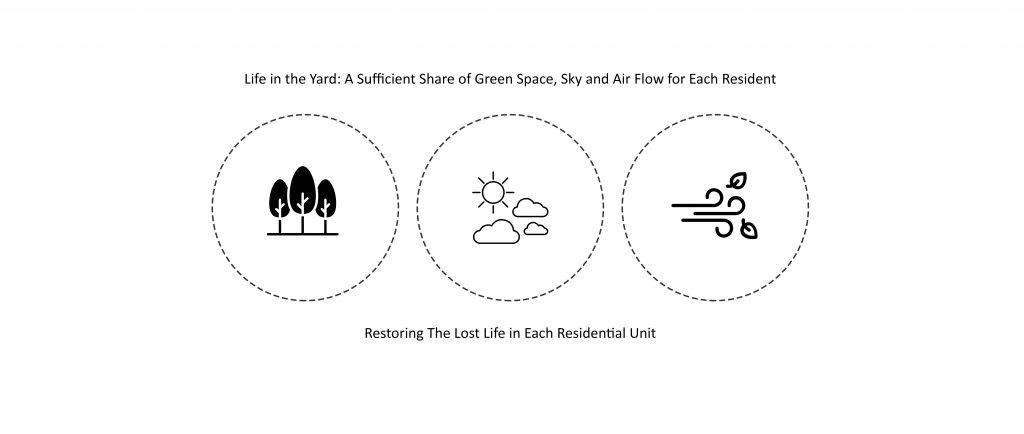
Spatial Hierarchy
Linking the in and out spaces is one of the essential parts of designing human settlements. The socio-spatial connection in the spatial hierarchy of reaching from the street to the house will reduce anxiety while increasing the mind peace of people.
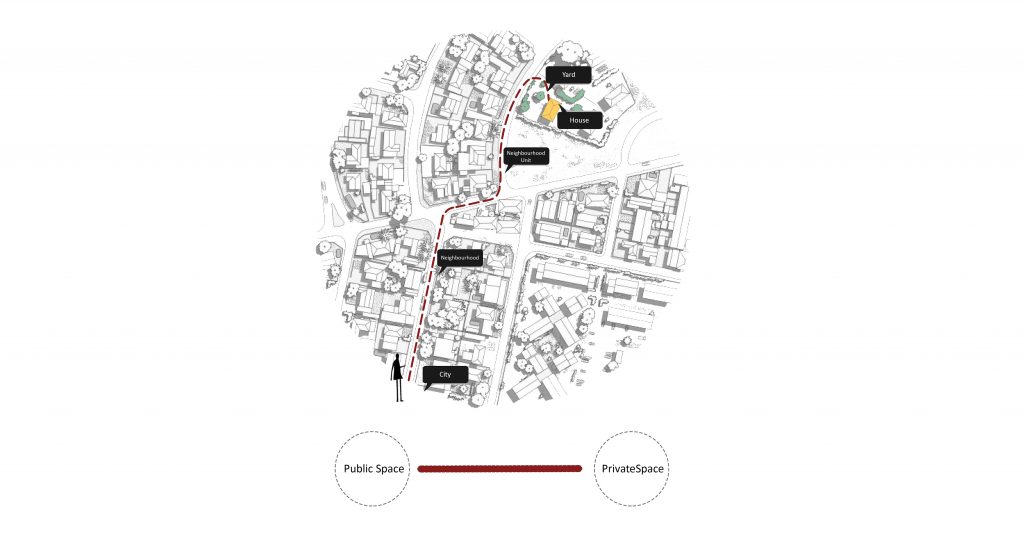
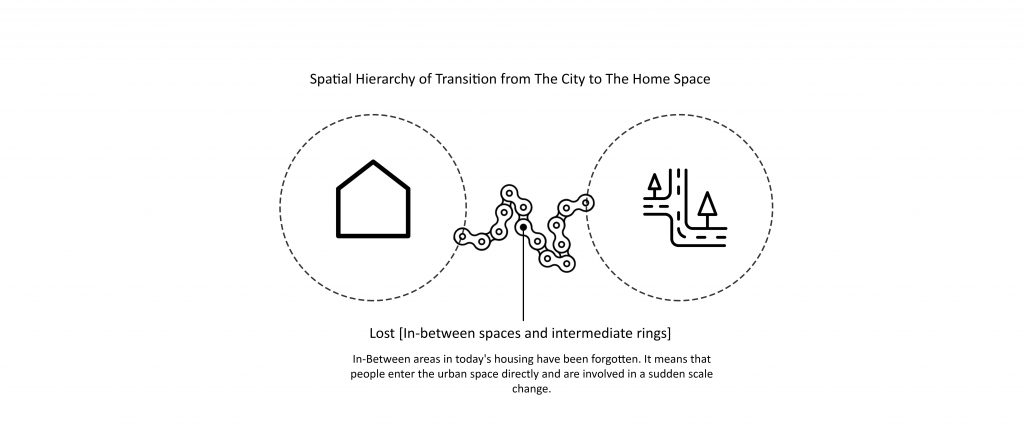
“Kamran” residential building is located in the heart of the Elahiye neighborhood. The neighborhood was once full of gardens and was considered an essential part of the natural infrastructure of Tehran. Therefore, the planning and design of “Kamran” residence focus on environmental restoration. This design tries to create a micro-climate with the feeling of being safe at home. The landscape is designed to balance practicality and beauty. The mentioned landscape design works at different levels. The design will ensure the residential quality of life, increase biodiversity, and create a safe, lively, and active environment. All in All, it provides maximum human-nature interactions and residents’ communication with each other.
